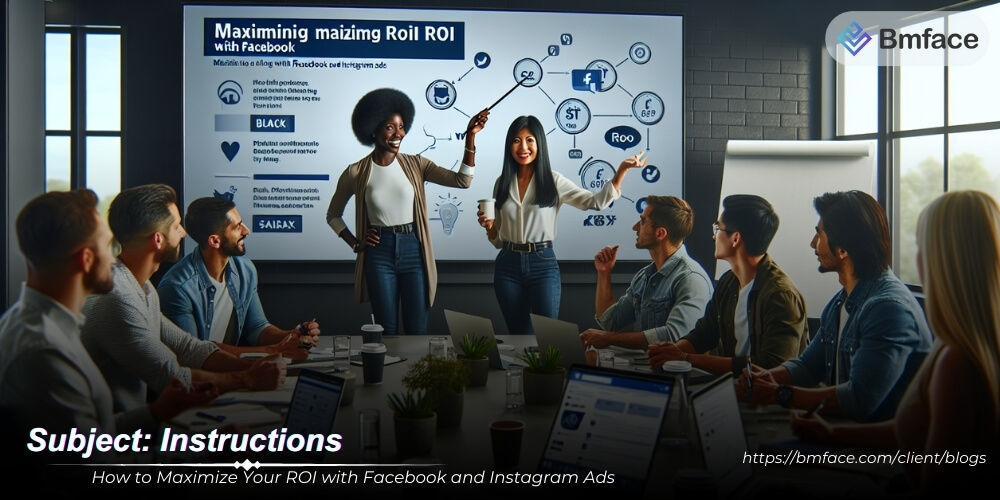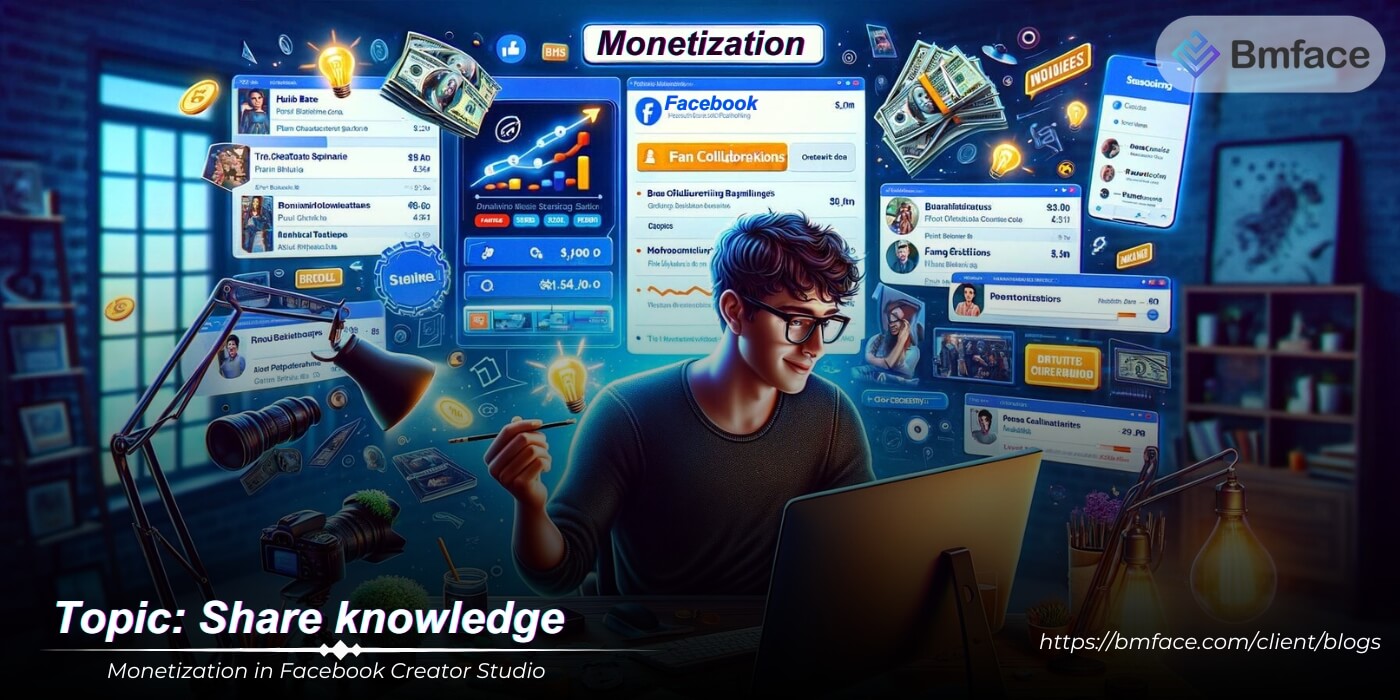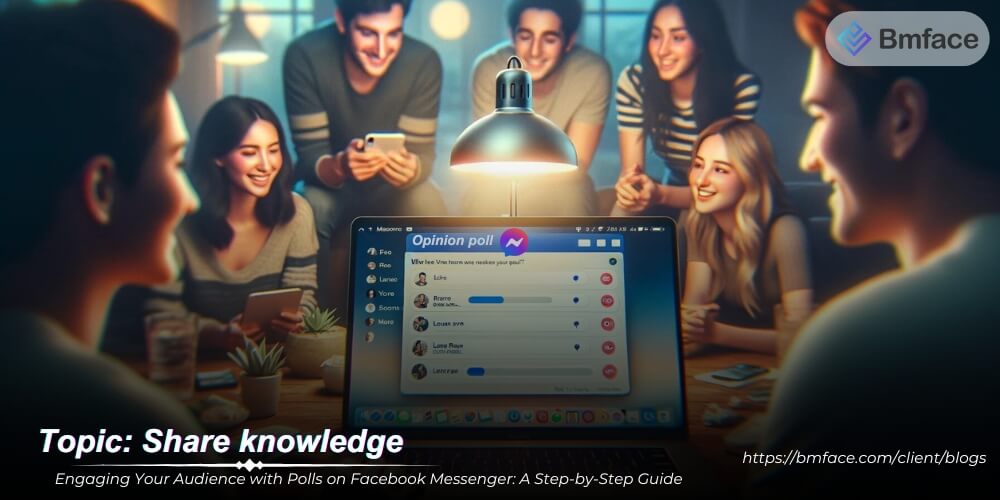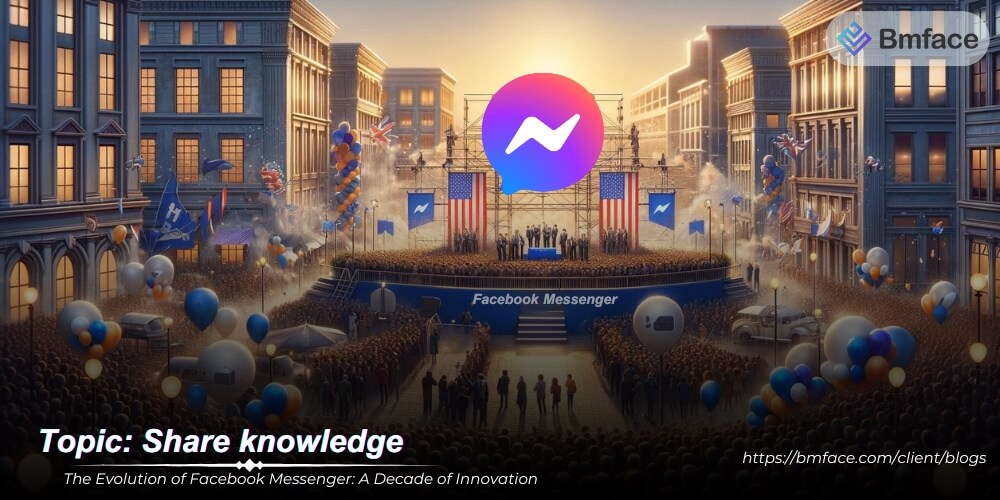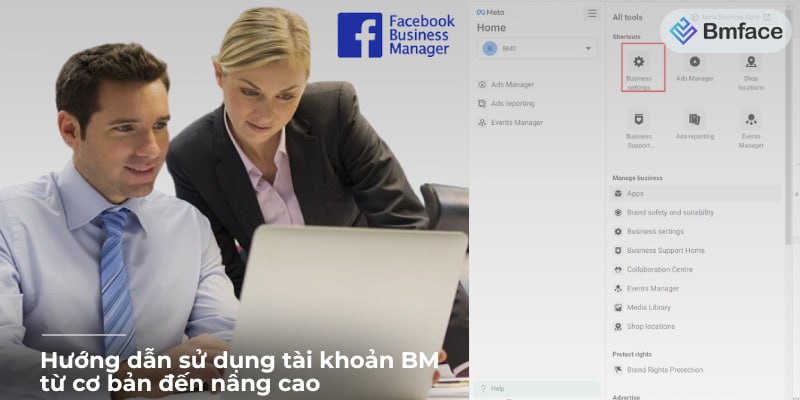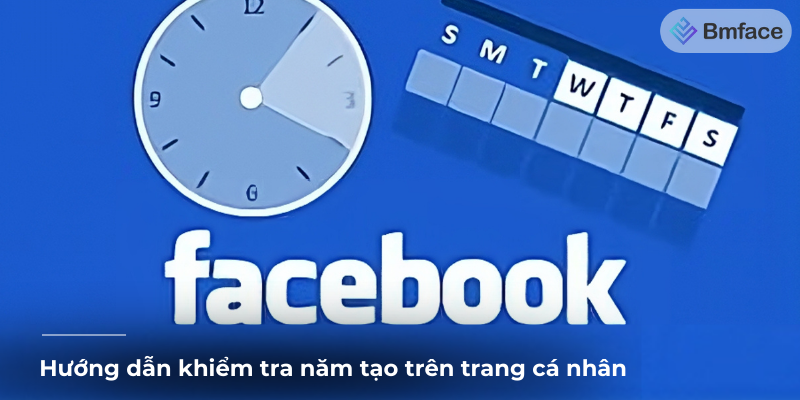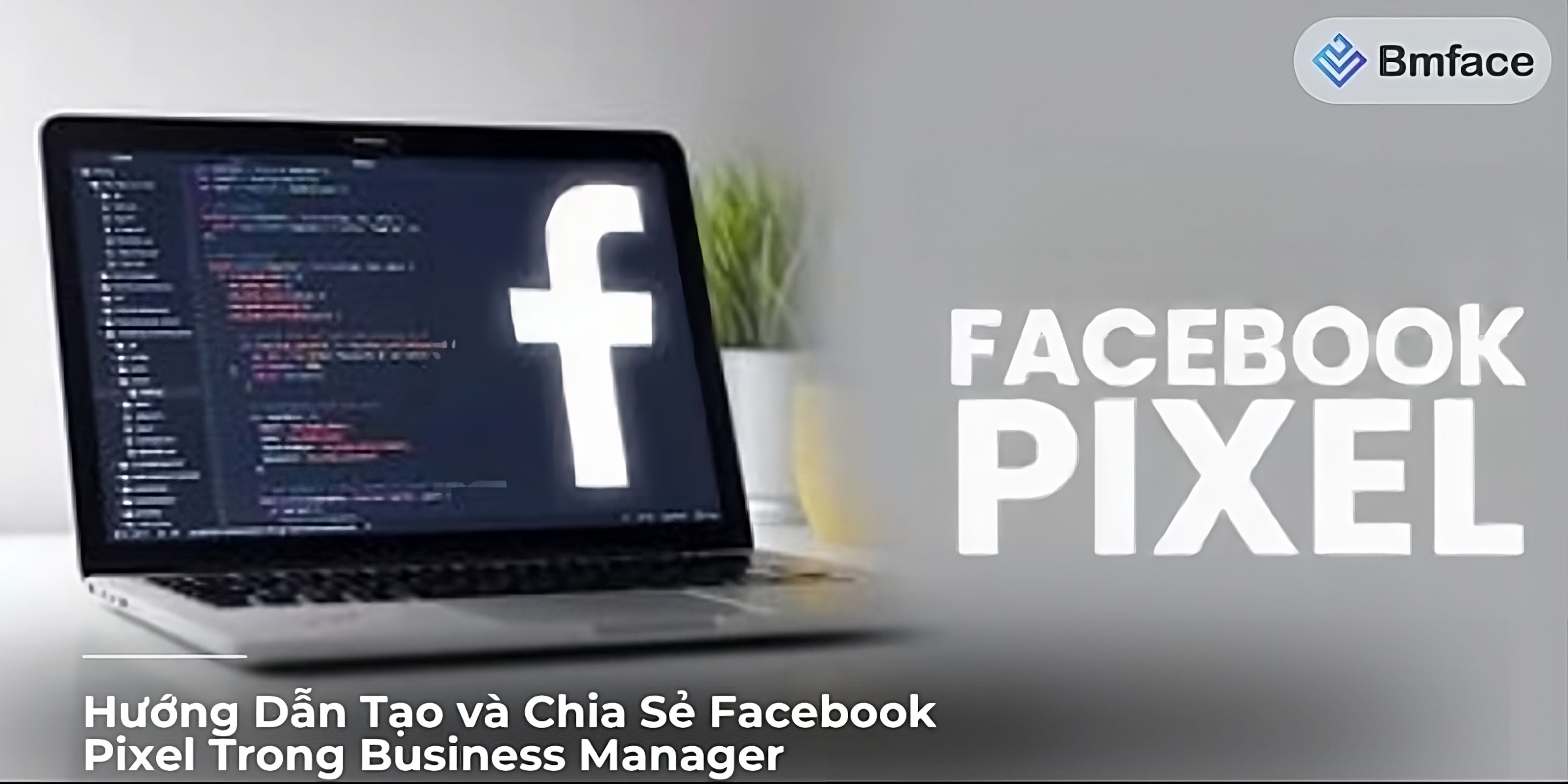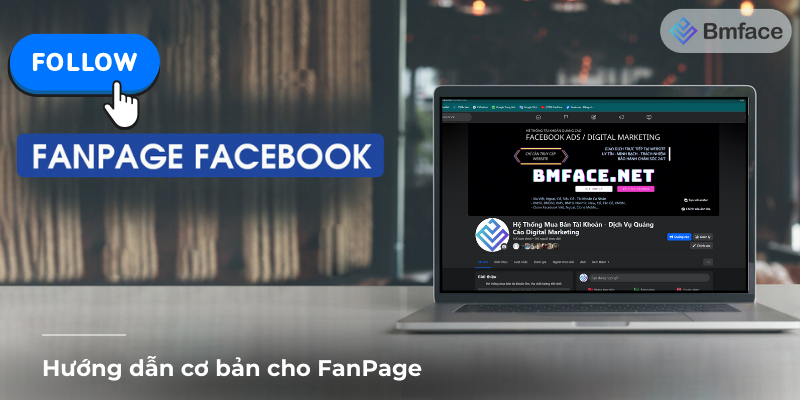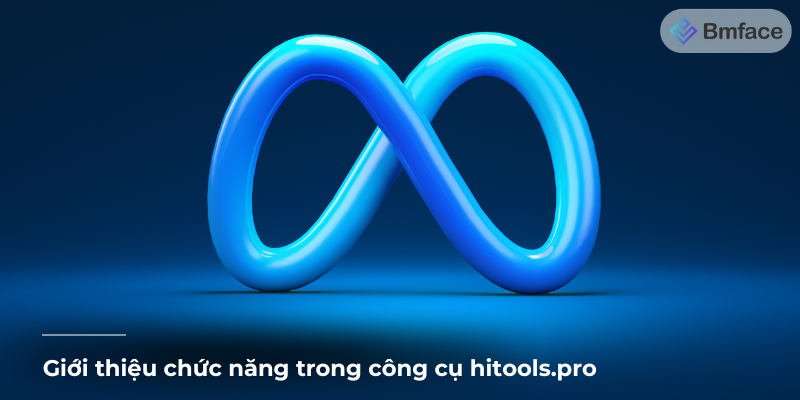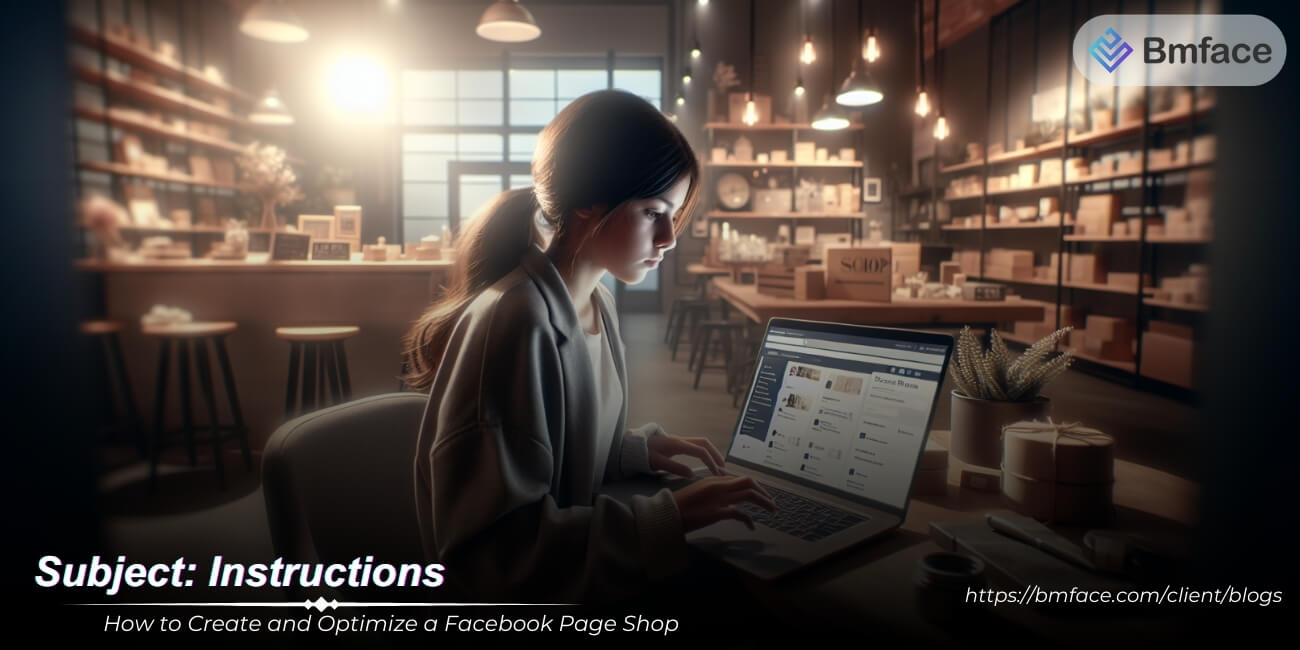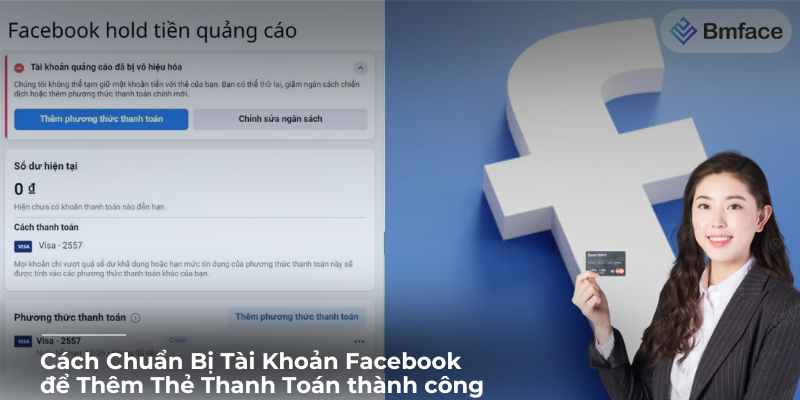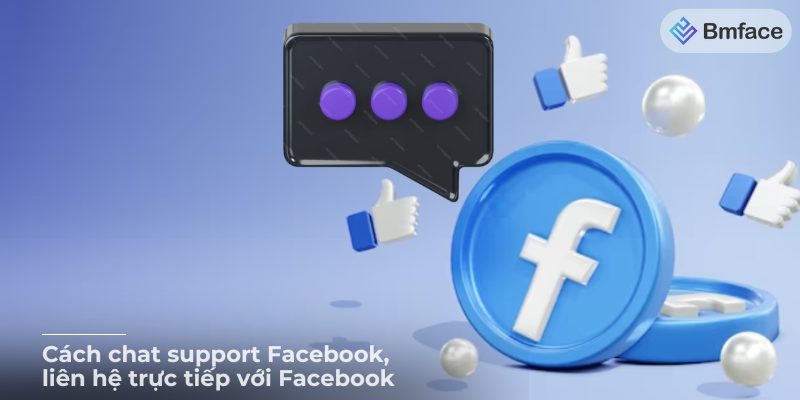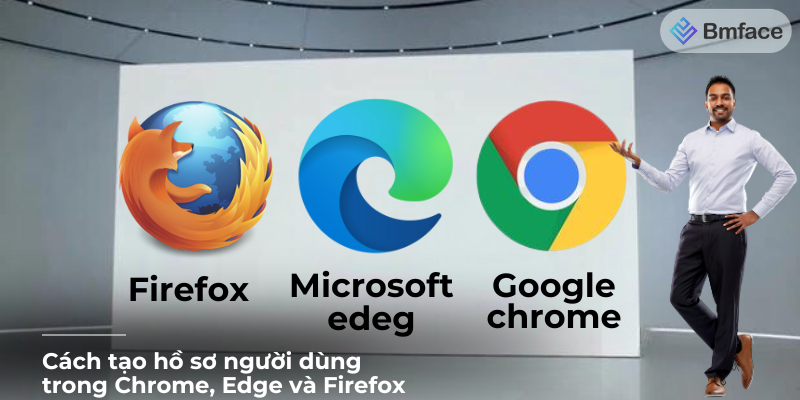Maximizing Return on Investment (ROI) with Facebook and Instagram advertising is critical to the success of your digital marketing campaigns. Both platforms offer powerful advertising tools, but to get the most out of them, you need a well-thought-out strategy. This article BMface will guide you through the best practices for maximizing ROI with Facebook and Instagram advertising.
Understanding ROI in Social Media Advertising
What is ROI?
ROI, or Return on Investment, is a key metric used to measure the profitability and efficiency of your advertising campaigns. It is calculated by dividing the net profit generated from your ads by the total cost of those ads. The formula for ROI is:
ROI=Net ProfitAd Cost×100\text{ROI} = \frac{\text{Net Profit}}{\text{Ad Cost}} \times 100ROI=Ad CostNet Profit×100
For example, if you spend $1,000 on a Facebook ad campaign and it generates $5,000 in sales, your net profit would be $4,000. The ROI would be:
ROI=40001000×100=400%\text{ROI} = \frac{4000}{1000} \times 100 = 400\%ROI=10004000×100=400%
A high ROI indicates that your advertising efforts are yielding a substantial return relative to the investment made.
Importance of ROI
-
Measuring Effectiveness:
- Ad Performance: ROI helps you assess the effectiveness of your ad campaigns. It indicates whether your marketing strategies are successful in generating revenue and achieving your business goals.
- Cost-Benefit Analysis: By understanding ROI, you can perform a cost-benefit analysis to determine if the financial returns from your ads justify the expenses incurred.
-
Budget Allocation:
- Informed Decisions: High ROI indicates that your ad campaigns are performing well, providing a solid basis for allocating more budget to successful strategies. Conversely, low ROI suggests the need for reevaluation and optimization of underperforming campaigns.
- Resource Management: Efficiently manage your advertising budget by investing in high-ROI campaigns, ensuring maximum return on your marketing spend.
-
Strategic Planning:
- Future Campaigns: ROI insights help in making informed decisions about future advertising strategies. By analyzing which campaigns yielded the highest ROI, you can replicate successful tactics and avoid less effective ones.
- Optimization: Continuously monitoring ROI allows you to identify areas for improvement. By tweaking ad content, targeting, and placement based on ROI data, you can enhance the overall performance of your campaigns.
Example of Calculating and Using ROI:
-
Calculating ROI:
- Scenario: You run a Facebook ad campaign with a budget of $1,500, resulting in $6,000 in sales.
- Net Profit: Sales ($6,000) - Ad Cost ($1,500) = $4,500
- ROI Calculation: ROI=45001500×100=300%\text{ROI} = \frac{4500}{1500} \times 100 = 300\%ROI=15004500×100=300%
-
Using ROI for Decision Making:
- High ROI: A 300% ROI indicates a highly effective campaign. Consider increasing the budget for similar campaigns or using similar strategies in other marketing channels.
- Low ROI: If a different campaign shows only a 50% ROI, analyze the factors contributing to the lower performance. This could involve tweaking the ad copy, improving targeting, or testing different ad formats.
Understanding and calculating ROI is crucial for maximizing the effectiveness of your social media advertising efforts. High ROI not only justifies your ad spend but also guides you in making strategic decisions for future campaigns. By continuously monitoring and optimizing for ROI, you ensure that your advertising investments are driving significant value and contributing to your overall business success.
Setting Clear Goals
Define Your Objectives
-
Identify Specific Goals:
- Brand Awareness: Aim to increase the visibility of your brand. This can involve reaching a larger audience and making more people aware of your products or services.
- Website Traffic: Focus on driving more visitors to your website. This can help increase the chances of conversions and sales.
- Lead Generation: Collect potential customer information for future marketing efforts. This can include gathering email addresses, phone numbers, or other contact details.
- Sales Boost: Directly aim to increase the number of sales or revenue generated from your ad campaigns. This can be through promotions, discounts, or highlighting best-selling products.
-
SMART Objectives:
- Specific: Clearly define what you want to achieve. For example, "Increase website traffic by 20% in the next 3 months."
- Measurable: Ensure your goal can be measured. For example, tracking the number of new visitors to your site.
- Achievable: Set realistic goals that can be accomplished within your resources and time frame.
- Relevant: Align your goals with your overall business objectives. For instance, if your main business goal is to grow your customer base, focus on lead generation.
- Time-Bound: Set a deadline for achieving your goals. For example, "Boost sales by 15% by the end of Q2."
Align Goals with KPIs
-
Click-Through Rate (CTR):
- Definition: The percentage of people who click on your ad after seeing it. A higher CTR indicates that your ad is relevant and engaging to your audience.
- Alignment: If your goal is to drive website traffic, a high CTR is a crucial KPI. It shows that your audience is interested enough in your ad to visit your website.
-
Conversion Rate:
- Definition: The percentage of visitors who complete a desired action on your website, such as making a purchase or signing up for a newsletter.
- Alignment: If your goal is to generate leads or boost sales, focus on conversion rates. High conversion rates indicate that your landing page and call-to-action are effective.
-
Cost Per Acquisition (CPA):
- Definition: The cost of acquiring a new customer or lead. This is calculated by dividing the total cost of your ad campaign by the number of conversions.
- Alignment: For goals related to generating leads or sales, CPA is a critical KPI. It helps you understand how much you're spending to acquire each customer, allowing you to assess the efficiency of your ad spend.
Example of Setting Goals and Aligning KPIs:
-
Define Objectives:
- Objective: Increase website traffic by 25% over the next 6 months.
- Objective: Generate 500 new leads from Facebook ads within 3 months.
- Objective: Boost online sales by 20% in Q4.
-
Align Goals with KPIs:
- Website Traffic Goal: Track CTR and overall traffic to measure the increase in visitors.
- Lead Generation Goal: Monitor conversion rates from ad clicks to lead forms and calculate the CPA for acquiring each lead.
- Sales Boost Goal: Measure the conversion rate from ad clicks to completed purchases and track the overall sales revenue generated from the ad campaign.
Setting clear goals is the foundation of any successful advertising campaign. By defining specific, measurable, achievable, relevant, and time-bound (SMART) objectives, you create a roadmap for your campaign. Aligning these goals with appropriate Key Performance Indicators (KPIs) ensures you can accurately measure success and make informed decisions to optimize your efforts. This structured approach will help you achieve your marketing objectives effectively and efficiently.
Targeting the Right Audience
Use Facebook and Instagram Insights
-
Understanding Audience Demographics:
- Age and Gender: Identify the age groups and gender distributions that interact most with your content. This helps tailor your ads to resonate more effectively with these demographics.
- Location: Determine where your audience is located. This can inform geo-targeting strategies for localized promotions or campaigns.
-
Analyzing Interests and Behaviors:
- Interests: Utilize insights on your audience’s interests, such as hobbies, favorite brands, and activities. This allows you to craft ads that align with their preferences.
- Online Behavior: Monitor how your audience interacts with your ads and content. Look for patterns in engagement, such as likes, comments, shares, and clicks, to understand what types of content resonate most.
-
Using Insights for Ad Creation:
- Content Customization: Use the gathered insights to customize your ad content. For instance, if your audience shows a strong interest in a particular topic, incorporate that theme into your ads.
- Timing and Frequency: Schedule your ads to appear when your audience is most active online. This increases the likelihood of engagement and conversions.
Create Custom Audiences
-
Targeting Existing Interactors:
- Website Visitors: Retarget individuals who have visited your website. This keeps your brand top-of-mind and encourages them to return and complete a desired action.
- Email Subscribers: Use your email list to create custom audiences. These users have already shown interest in your brand, making them more likely to engage with your ads.
-
Engagement-Based Targeting:
- Social Media Engagement: Create custom audiences from users who have interacted with your social media content. This includes those who have liked, commented, shared, or clicked on your posts.
- Video Views: Target users who have watched your videos, especially those who viewed a significant portion. This indicates a higher level of interest and engagement.
-
Utilizing CRM Data:
- Customer Data Integration: Import your CRM data to create highly targeted custom audiences. This includes past customers and high-value leads, enabling personalized ad campaigns.
Lookalike Audiences
-
Creating Lookalike Audiences:
- Source Audience: Select a source audience, such as your custom audience of website visitors or email subscribers. Facebook uses this data to find new users with similar characteristics.
- Audience Size: Determine the size of your lookalike audience. A smaller percentage (1-2%) will be more similar to your source audience, while a larger percentage (5-10%) will have a broader reach but less similarity.
-
Expanding Reach:
- Finding New Customers: Lookalike audiences help you reach new users who are likely to be interested in your brand. This expands your potential customer base while maintaining relevance.
- Optimizing Ad Spend: Targeting lookalike audiences can lead to higher engagement and conversion rates, making your ad spend more efficient.
-
Iterative Improvement:
- Refining Audiences: Continuously refine your lookalike audiences based on performance data. Adjust the source audience and size to improve targeting accuracy and ad effectiveness.
- Testing and Optimization: Conduct A/B tests with different lookalike audiences to identify the most responsive segments. Use the insights gained to optimize your campaigns.
Targeting the right audience is essential for maximizing the effectiveness of your social media advertising campaigns. By leveraging Facebook and Instagram insights, creating custom audiences, and using lookalike audiences, you can ensure your ads reach the most relevant and engaged users. This targeted approach helps improve engagement, drive conversions, and ultimately, achieve your marketing objectives more efficiently.
Crafting Compelling Ads
High-Quality Visuals
-
Eye-Catching Images:
- Resolution: Ensure your images are high-resolution to maintain clarity and appeal on all devices.
- Relevance: Choose visuals that are directly related to your product or service. Avoid generic stock photos and opt for authentic, brand-specific images.
- Design: Incorporate vibrant colors and clean designs to grab attention. Use composition techniques like the rule of thirds and focal points to make your images more engaging.
-
Engaging Videos:
- Short and Sweet: Keep videos brief, ideally under 30 seconds, to retain viewer attention.
- Storytelling: Use storytelling to create an emotional connection. Showcase your product in real-life scenarios or highlight customer testimonials.
- Subtitles: Add subtitles to ensure your message is conveyed even when the video is viewed without sound.
-
Consistency Across Platforms:
- Brand Identity: Maintain a consistent visual style that aligns with your brand identity. This includes color schemes, fonts, and overall aesthetic.
- Ad Specifications: Follow the specific ad format guidelines for Facebook and Instagram to ensure your visuals display correctly on each platform.
Clear and Concise Messaging
-
Benefit-Focused Copy:
- Highlight Benefits: Clearly communicate the benefits of your product or service. Focus on how it solves a problem or improves the customer’s life.
- Use Simple Language: Avoid jargon and complex language. Write in a straightforward and relatable manner that your audience can easily understand.
-
Strong Call-to-Action (CTA):
- Direct CTAs: Use direct and compelling CTAs such as "Shop Now," "Learn More," or "Sign Up Today."
- Urgency and Scarcity: Incorporate elements of urgency or scarcity, like "Limited Time Offer" or "Only a Few Left," to encourage immediate action.
-
Headline and Description:
- Attention-Grabbing Headlines: Craft headlines that are intriguing and provoke curiosity. Make them relevant to the visual content and overall message.
- Concise Descriptions: Provide concise descriptions that supplement the headline. Ensure that the key points and benefits are immediately clear.
A/B Testing
-
Testing Different Elements:
- Headlines: Experiment with different headlines to see which one resonates more with your audience.
- Images and Videos: Test various visuals to determine which style or content type captures the most attention.
- CTAs: Compare different calls-to-action to find out which one drives more conversions.
-
Methodical Approach:
- One Variable at a Time: Change only one element per test to isolate its impact on performance. This ensures accurate results.
- Control Groups: Use control groups to measure the effectiveness of your tests against a standard baseline.
-
Analyzing Results:
- Performance Metrics: Track metrics such as click-through rates (CTR), conversion rates, and engagement rates to assess which variations perform best.
- Continuous Improvement: Use the insights gained from A/B testing to continuously refine and optimize your ad campaigns.
Creating compelling ads is a crucial aspect of successful social media advertising. By focusing on high-quality visuals, clear and concise messaging, and conducting thorough A/B testing, you can craft ads that capture attention and drive engagement. This targeted approach ensures that your advertising efforts are effective, resonating with your audience, and achieving your marketing goals.
Budget Management
Set a Realistic Budget
-
Initial Budget Planning:
- Assess Your Finances: Evaluate your overall marketing budget and determine how much you can allocate to Facebook and Instagram ads without compromising other marketing activities.
- Start Small: Begin with a modest budget to test the waters. This allows you to gather data and understand what works before committing more funds.
-
Incremental Increase:
- Performance-Based Scaling: Gradually increase your budget based on the performance metrics of your ads. If an ad campaign shows a positive return on investment (ROI), consider allocating more funds to it.
- Avoid Over-Spending: Keep a close watch on your spending and avoid significant budget increases without data-backed justification.
-
Budget Allocation:
- Daily vs. Lifetime Budgets: Decide whether to use a daily budget (spending a set amount each day) or a lifetime budget (spending a set amount over the entire duration of the campaign). Choose based on your campaign goals and duration.
Optimize Ad Spend
-
Utilize Ad Optimization Tools:
- Automatic Placements: Enable automatic placements to allow Facebook to distribute your ads across all its platforms (including Instagram) to achieve the best results at the lowest cost.
- Bid Strategies: Use Facebook’s bid strategies, such as cost-per-click (CPC) or cost-per-impression (CPM), to control how much you pay for your ads. Adjust your bids based on the performance and goals of your campaigns.
-
Performance Tracking:
- Monitor Ad Performance: Regularly review the performance of your ads using metrics like cost per click (CPC), cost per conversion, and return on ad spend (ROAS). Identify high-performing ads and allocate more budget to them.
- Adjust Bids and Budgets: Based on performance data, adjust your bids and budgets to maximize efficiency. Increase spend on high-performing ads and reduce or pause spend on underperforming ones.
-
Audience Refinement:
- Targeted Audiences: Use detailed targeting options to ensure your ads reach the most relevant audience. Refine your audience based on demographics, interests, behaviors, and lookalike audiences.
- Exclusions: Exclude audiences that are unlikely to convert to avoid wasted ad spend. For instance, exclude users who have already purchased your product.
-
Ad Scheduling:
- Optimal Times: Schedule your ads to run at times when your target audience is most active. Use insights from previous campaigns to determine the best times for ad placement.
- Ad Duration: Decide the duration of your ads based on the campaign objectives. Short-term ads can create a sense of urgency, while long-term ads can build sustained awareness.
Effective budget management is key to maximizing the impact of your social media advertising campaigns. By setting a realistic budget, leveraging optimization tools, and continuously monitoring and adjusting your ad spend, you can ensure that your campaigns are cost-effective and achieve the desired results. Implement these strategies to optimize your budget and enhance the overall performance of your Facebook and Instagram ads.
Monitoring and Optimization
Track Performance Metrics
-
Key Metrics to Monitor:
- Click-Through Rate (CTR): Measures the effectiveness of your ad in generating clicks. A higher CTR indicates that your ad is compelling and relevant to your audience.
- Conversion Rate: Tracks the percentage of users who take the desired action (e.g., make a purchase, sign up for a newsletter) after clicking on your ad. This is crucial for understanding how well your ad converts interest into action.
- Return on Investment (ROI): Calculates the profitability of your ad campaign. It's essential to compare the revenue generated from your ads to the cost of running them.
-
Using Analytics Tools:
- Facebook Ads Manager: Provides detailed insights into your ad performance, including reach, engagement, and conversion data. Utilize these analytics to assess how well your ads are performing.
- Google Analytics: If you drive traffic to your website, use Google Analytics to track user behavior and conversion paths. This helps you understand the journey users take from your ads to completing a conversion.
Adjust Your Strategy
-
Data-Driven Adjustments:
- Targeting: Refine your audience targeting based on performance data. If certain demographics or interests show higher engagement, focus your efforts on those segments.
- Ad Creatives: Test different ad creatives, including images, videos, headlines, and copy. Identify which elements resonate most with your audience and optimize accordingly.
- Budget Allocation: Reallocate your budget to high-performing ads or campaigns. Reduce spending on ads that are underperforming to maximize your ROI.
-
Continuous Improvement:
- Regular Reviews: Schedule regular reviews of your ad performance. Weekly or bi-weekly assessments can help you stay on top of trends and make timely adjustments.
- A/B Testing: Conduct ongoing A/B tests to experiment with different variables and identify the most effective combinations. Use the insights gained to refine your strategy.
Retargeting Campaigns
-
Implement Retargeting:
- Retargeting Pixels: Install Facebook and Instagram retargeting pixels on your website to track user behavior. This enables you to create custom audiences for retargeting based on specific actions, such as page visits or abandoned carts.
- Custom Audiences: Create custom audiences of users who have interacted with your brand but haven't converted. Tailor your retargeting ads to address their specific needs and interests.
-
Craft Compelling Retargeting Ads:
- Personalized Messaging: Use personalized ad copy that speaks directly to the interests or pain points of your retargeted audience. Highlight the benefits and unique selling points of your product or service.
- Incentives: Offer special incentives, such as discounts or free trials, to encourage conversions from retargeted users. Make it easy for them to complete the desired action.
-
Monitor and Optimize Retargeting Efforts:
- Performance Analysis: Regularly review the performance of your retargeting campaigns. Track metrics such as engagement rates, conversion rates, and ROI to assess their effectiveness.
- Adjust Campaigns: Based on performance data, make necessary adjustments to your retargeting strategy. This might include tweaking your audience segments, updating ad creatives, or testing new incentives.
Effective monitoring and optimization are critical to the success of your social media advertising campaigns. By tracking performance metrics, making data-driven adjustments, and implementing retargeting campaigns, you can enhance the effectiveness of your ads and maximize your ROI. Continuously refine your strategy based on insights and performance data to achieve sustained success in your Facebook and Instagram advertising efforts.
Leveraging Advanced Features
Facebook Pixel
-
Installation and Setup:
- Add Pixel to Your Website: Install the Facebook Pixel on your website by adding the pixel code to your site's header. This allows Facebook to track user interactions on your site.
- Configure Events: Set up standard events (e.g., page views, purchases) and custom events (specific actions relevant to your business) to track key user behaviors.
-
Benefits of Facebook Pixel:
- Conversion Tracking: Understand how users interact with your website after clicking on your ads. Track actions such as purchases, sign-ups, and other conversions.
- Audience Building: Create custom audiences based on user actions, such as website visits or specific page views. Use this data to retarget users and create lookalike audiences.
- Ad Optimization: Optimize your ads for specific actions, such as purchases or sign-ups, to improve your campaign’s effectiveness and increase ROI.
Instagram Shopping
-
Setup Instagram Shopping:
- Connect Your Product Catalog: Link your e-commerce platform’s product catalog to your Instagram account via Facebook Business Manager. This enables you to tag products in your posts and stories.
- Enable Shopping Features: Once your product catalog is linked, apply for Instagram Shopping. After approval, you can tag products in your feed posts and stories.
-
Benefits of Instagram Shopping:
- Seamless Shopping Experience: Allow users to shop directly from your Instagram posts and stories, reducing friction in the buying process.
- Product Tags: Use product tags to highlight items in your posts. Users can tap on these tags to view product details and make purchases.
- Shoppable Stories: Enhance engagement by adding product stickers to your stories. This feature makes it easy for users to discover and buy products directly from stories.
Conclusion
Maximizing your ROI with Facebook and Instagram ads requires a strategic approach. Here’s a summary of the key steps:
- Setting Clear Goals: Define your objectives and align them with KPIs to measure success.
- Targeting the Right Audience: Use Facebook and Instagram insights, create custom audiences, and expand reach with lookalike audiences.
- Crafting Compelling Ads: Use high-quality visuals, clear messaging, and A/B testing to refine your ad creatives.
- Budget Management: Set realistic budgets and optimize ad spend using Facebook’s tools.
- Monitoring and Optimization: Track performance metrics, adjust strategies, and implement retargeting campaigns for better results.
- Leveraging Advanced Features: Utilize Facebook Pixel for conversion tracking and ad optimization. Use Instagram Shopping to create a seamless shopping experience.
By implementing these best practices, you can enhance the effectiveness of your social media advertising efforts and achieve impressive results. Continuously monitor and adjust your campaigns based on performance data to ensure you’re maximizing your return on investment.
Cảm ơn bạn đã theo dõi bài viết. Mua hàng tại Bmface.com để ủng hộ đội ngũ Admin viết thêm nhiều bài viết hay. Xin cảm ơn!


